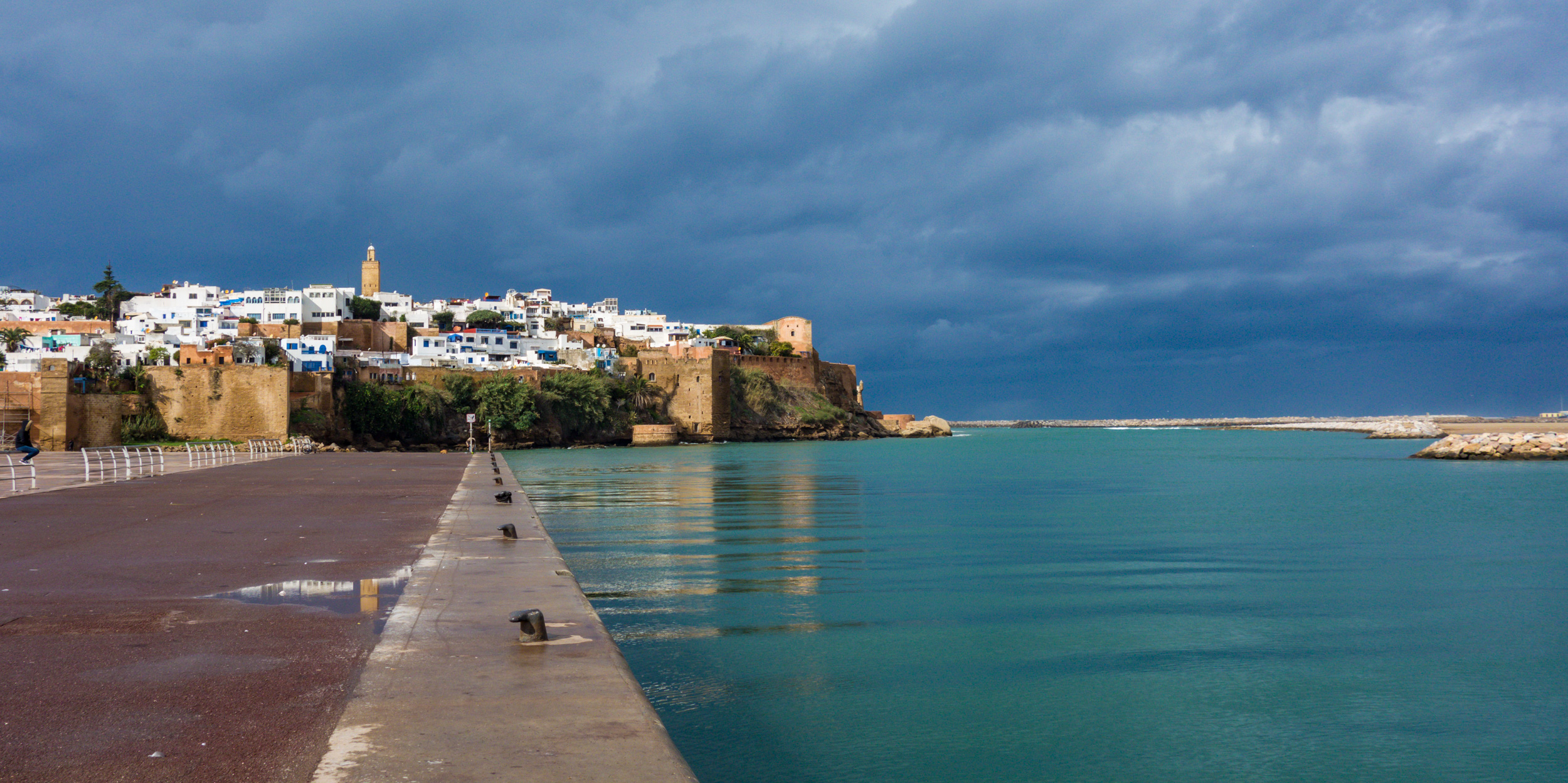
Rabat is the capital city of Morocco and one of the country’s most important cultural and historical centers. It is located on the Atlantic coast at the mouth of the Bou Regreg River, opposite the city of Salé.
Historical Background
- Founding: Rabat’s history dates back to the 12th century when the Almohad ruler Abd al-Mu’min established a ribat (a fortified monastery) on the site, which later evolved into a military base and eventually a city.
- Almohad Period: The city became significant under the Almohad Caliph Yaqub al-Mansur, who began the construction of many important structures, including the Hassan Tower and the city walls. However, after the Almohads, the city’s prominence waned until it was revived in the 17th century.
- Modern Era: In the early 20th century, during the French Protectorate, Rabat was chosen as the administrative capital of Morocco, and it has remained the capital since Morocco gained independence in 1956.

Key Attractions and Landmarks
- Hassan Tower: This unfinished minaret of a grand mosque was intended to be the largest in the world but was never completed after the death of Yaqub al-Mansur. It stands as a symbol of Rabat and is a UNESCO World Heritage site.
- Mausoleum of Mohammed V: Located near the Hassan Tower, this mausoleum houses the tombs of King Mohammed V and his sons, King Hassan II and Prince Abdallah. It is a masterpiece of modern Alaouite architecture, with intricate designs and traditional Moroccan craftsmanship.
- Kasbah of the Udayas: A fortified quarter overlooking the Atlantic Ocean and the Bou Regreg River, the Kasbah is one of the oldest parts of Rabat. It features narrow streets, Andalusian gardens, and offers panoramic views of the coastline.
- Royal Palace (Dâr-al-Makhzen): The official residence of the King of Morocco, the Royal Palace is located in a large complex with government buildings and beautiful gardens. While the palace itself is not open to the public, the exterior and surrounding areas are worth visiting.
- Rabat Archaeological Museum: This museum houses one of the most important collections of artifacts from Morocco’s prehistoric and ancient history, including Phoenician, Roman, and Islamic periods.
- Medina of Rabat: The old town of Rabat, with its narrow streets and traditional markets (souks), is a UNESCO World Heritage site. It provides a glimpse into the traditional way of life and offers a variety of handicrafts, textiles, and other goods.

Modern Rabat
- Administrative and Political Center: As the capital, Rabat is the political and administrative hub of Morocco, home to government institutions, embassies, and international organizations.
- Cultural Hub: Rabat hosts various cultural festivals, including the Mawazine music festival, which attracts international artists. The city also boasts theaters, art galleries, and cultural centers.
- Education and Research: Rabat is home to several prestigious educational institutions, including Mohammed V University, one of the leading universities in Morocco.

Geography and Climate
- Geography: Rabat is situated on the Atlantic coast, with a mild climate influenced by the ocean. The Bou Regreg River separates it from its twin city, Salé.
- Climate: Rabat enjoys a Mediterranean climate with warm, dry summers and mild, wet winters. The coastal location moderates temperatures, making it one of the more temperate cities in Morocco.
UNESCO World Heritage Status
In 2012, Rabat was designated a UNESCO World Heritage site due to its historical significance, unique blend of ancient and modern architecture, and its role as a political and cultural center.
Rabat offers a mix of historical charm, cultural richness, and modern vitality, making it an essential destination for anyone exploring Morocco.

Was this helpful?
0 / 0







